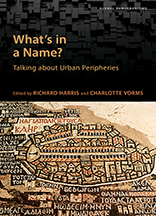|
Please consider ordering these titles for your personal and university libraries.
|
|
|
Cities in Motion: Urban Life and Cosmopolitanism in Southeast Asia, 1920–1940
Winner of the 2015–2016 Urban History Association Best Book Award
by Su Lin Lewis, Lecturer in Modern Global History
University of Bristol
(Cambridge University Press, 2016)
In the 1920s and 1930s, the port-cities of Southeast Asia were staging grounds for diverse groups of ordinary citizens to experiment with modernity, as a rising Japan and American capitalism challenged the predominance of European empires after the First World War. Both migrants and locals played a pivotal role in shaping civic culture. Moving away from a nationalist reading of the period, Su Lin Lewis explores layers of cross-cultural interaction in various spheres: the urban built environment, civic associations, print media, education, popular culture and the emergence of the modern woman. [more]
GUH blog entry, GUHP profile, Author website
|
| |
|
|
|
|
Brand New! Making Cities Global: The Transnational Turn in Urban History
Edited by Nancy H. Kwak (History UC San Diego) and A. K. Sandoval-Strausz (History U Penn)
(University of Pennsylvania Press, 2017)
In recent decades, hundreds of millions of people across the world have moved from rural areas to metropolitan regions, some of them crossing national borders on the way. While urbanization and globalization are proceeding with an intensity that seems unprecedented, these are only the most recent iterations of long-term transformations—cities have for centuries served as vital points of contact between different peoples, economies, and cultures. Making Cities Global explores the intertwined development of urbanization and globalization using a historical approach that demonstrates the many forms transnationalism has taken, each shaped by the circumstances of a particular time and place. [more]
GUH blog, GUHP profile: Kwak, Sandoval-Strausz,
Editor webites: Kwak, Sandoval-Strausz
|
|
|
|
|
 |
|
|
|
|
Brand New! What's In A Name?: Talking About Urban Peripheries
Edited by Richard Harris (McMaster University) and Charlotte Vorms (Pantheon-Sorbonne University)
(University of Toronto Press, 2017)
In What’s in a Name? editors Richard Harris and Charlotte Vorms have gathered together experts from around the world in order to provide a truly global framework for the study of the urban periphery. Rather than view these distinct communities through the lens of the western notion of urban sprawl, the contributors focus on the variety of everyday terms that are used, together with their connotations. This volume explores the local terminology used in cities such as Beijing, Bucharest, Montreal, Mumbai, Rio de Janeiro, Rome, Sofia, as well as more broadly across North America, Australia, Southeast Asia, and elsewhere. What’s in a Name? is the first book in English to pay serious and sustained attention to the naming of the urban periphery worldwide. By exploring the ways in which local individuals speak about the urban periphery Harris and Vorms bridge the assumed divide between the global North and the global South. [more]
GUHP profile: Harris Editor websites: Harris, Vorms
|
|
|
|
|
 |
|
| |
| |
|
"Urbanism and exchange in the North Atlantic/Baltic, 600–1000 ce"
In T. Hodos (ed.), The Routledge Handbook of Archaeology and Globalization
by Søren M. Sindbæk, Professor of Medieval Archaeology
The University of Aarhus
(Routledge, 2016)
By 600 ce, the islands and coasts by which northern Europe merges into the North Atlantic and the Baltic Sea were culturally and socially almost a world to itself. Trickles of exotic objects, such as Indian amethyst beads or Red Sea cowrie shells, marked the existence of global flows of material culture, which spread by long and roundabout chains of intermediaries, mainly through western Europe and the Mediterranean. It is doubtful if people in northern Europe had any clue as to the real-world origin of these objects, and their involvement is likely to have been limited to the last of many steps in their exchange. This situation was to change. By 1000 ce, sailors from this part of the world were exploring the coasts of Greenland and Newfoundland for walrus ivory and other high-value commodities to be brought back to urban markets in their homelands, while merchants from the same market towns were trailing successful trade routes to the Black Sea and the Caspian for commerce in slaves, silk and silver. [more]
GUHP profile, Author webiste
|
|
|
|
|
|
Lagos Studies Association
Established in 2017, the Lagos Studies Association is an international, interdisciplinary organization of academic and non-academic practitioners whose interest focus on Lagos and its peoples. Our members include scholars, students, activists, artists, teachers, donors, policymakers, and development professionals. Through exchanges between academic and non-academic practitioners, we anticipate deepening the rigor of contemporary scholarship as well as encouraging the integration of critical and thought-provoking questions into non-academic projects on Lagos. [more]
|
|
|
|
| |